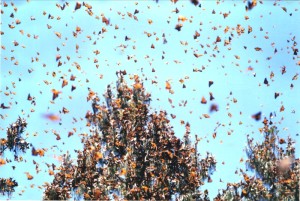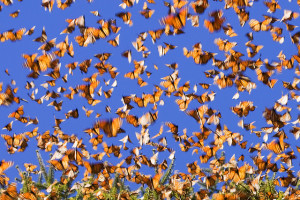I have wanted to start the Signs of Spring but have not “seen” very many hints that this long, cold winter was ready to give way to warmer, greener days. There are a few birds singing when I take my dog, Izzy, out for her 6:45 am walk. Titmice are pinging out their two note patterns, Carolina wrens (who have sung all winter!) cycle through their four phrase whistles, and northern cardinals make starts at their pulsating, territorial songs from the tops of the surrounding spruce and maple trees. These birds are already thinking about mating. What could be a bigger sign of spring? The blue jays are also pinging and screeching at me but they are just demanding their morning piles of peanuts and shelled corn. Another observation of the approaching spring is that it is not pitch dark at 6:45 am. I don’t have to carry a flashlight or risk being blinded by passing cars’ headlights as I walk along the roadside. We have added an hour and forty minutes to our daylight since the winter solstice on December 21. Sunrise is happening 40 minutes earlier than it did during our darkest day. Now, all of this is important, but it doesn’t quite feel like enough to start our observations of spring.
So, instead, I am starting with a thought experiment: I am imagining that I am in the coniferous forests of the mountains in the states of Mexico and Michoacán in south-central Mexico near the town that our good friend and former teaching colleague, Maria Franco, grew up. The branches and the limbs of these tall trees are covered with the orange and black bodies of millions of hibernating monarch butterflies, and right about now these butterflies are starting to wake up! Great clouds of monarchs are swirling around in the air!
The monarchs that have been sleeping away the winter in these Mexican forests are nearing the end of their nine month long life spans. They are starting to fly to the north drinking nectar from the early blooming flowers and mating along the way. They may get as far as Texas or Oklahoma where, hopefully, their arrival will coincide with the emergence of this season’s milkweed plants. The females will then lay their three to four hundred eggs on the milkweeds (spreading the eggs out over a large number of plants) and the overwintering generation will die.
The eggs will hatch in three to five days depending on the temperature. The emerging larvae feed first on the egg capsule and then begin to eat the milkweed leaves. They will molt five times during this larval life stage and increase their body mass more than two thousand times. The eggs and the larvae (the “caterpillars”) are under intense predation and parasite pressures. More than ninety percent of the eggs and caterpillars will fail to survive. Eggs will be eaten by ants, earwigs and snails, and larvae will be eaten by beetles and other insects (like paper wasps) or killed by parasitoid wasps, bacteria, or fungi. Since the larvae feed exclusively on milkweed leaves they accumulate the milkweed’s cardeolides (a cardiac glycoside that can cause the heart of a vertebrate to stop its contractions!) in their body tissues. These cardeolides make the larvae (and, eventually, the adults) poisonous to most vertebrates. Relatively few monarch caterpillars or adult butterflies, then, will be consumed by vertebrate predators.
The end stage caterpillar then forms a chrysalis within which the tissues and organs of the larvae dissolve and are reformed into the structures of the butterfly. This metamorphosis takes between nine and fifteen days. The emergence of the butterfly from the chrysalis stimulates mating and a drive to fly on toward the northeast. New adults repeat this mating, feeding, and egg laying cycle several times through the summer until seasonal conditions or some innate developmental cue triggers the adults to turn around, forgo mating, and then start the long trip back to the mountain forests of Mexico.
The above cycle is characteristic of the very large monarch population that is east of the Rocky Mountains. Almost all of these butterflies overwinter in the coniferous forests in the mountains of Michoacán and Mexico. This round trip migration to and from this very specific overwintering site in Mexico covers several thousand miles. The monarchs that live in the smaller area west of the Rockies, on the other hand, overwinter in in coastal sites in Southern and Central California. Their migratory route only measures hundreds of miles at the most. In both overwintering sites, however, the numbers of monarchs covering the trees and shrubs while they wait out the winter months in their inactive, diapause states can be truly staggering!
There are some recent observations about the long-distant, migrating, eastern monarchs. One involves the impact of the long, fall migration to reduce the parasite load of the butterflies’ population. A serious, protozoan parasite (Ophryocystis elektroscirrha) that infects monarchs is eliminated when they undergo the strenuous migration all the way to the forests of Michoacán (because infected individuals do not survive the migration!). When the monarchs bypass the long migration (by selecting to overwinter in forests of southern United States (like in Barbara Kingsolver’s excellent novel “Flight Behavior”)) or when they linger too long at planted patches of tropical milkweed (which does not undergo a seasonal die-back like the temperate milkweed species), then they do not select out individuals carrying the parasites possibly with disastrous results (results that could include annihilation of the entire overwintering population!).
The trip to Mexico, then, is built into the health and fitness of the entire monarch species! Maria has promised Deborah and I that she will take us to Mexico to see the monarchs in their forests. A great January trip that will feel like a dream!
So, on this cold, wintery day I am not looking at the ice and snow around me. I close my eyes and I am in Michoacán with the monarchs. It is a glorious sign of spring!




BIll, Do You want me to start organizing this wonderful trip for January 2016? I am ready
Reality is what live and so are our dreams
Starting off your blog w that precious bird the carolina wren made my heart sing. You know we have milkweed here in our garden. We want to come w u to mexico when you go. heres to. spring!!!!
Spring, butterflies, 1 hr. 40 min. more daylight—–what lovely ideas.
It’s so funny that you featured a Carolina Wren my favorite year around bird. I saw one in the rafters of our rear pavilion which I hope to have nest there when I provide nesting boxes up there for them and wondered what it was up to. Well I found out it was dislodging mud wasp nests and eating the contents that were all over the floor.